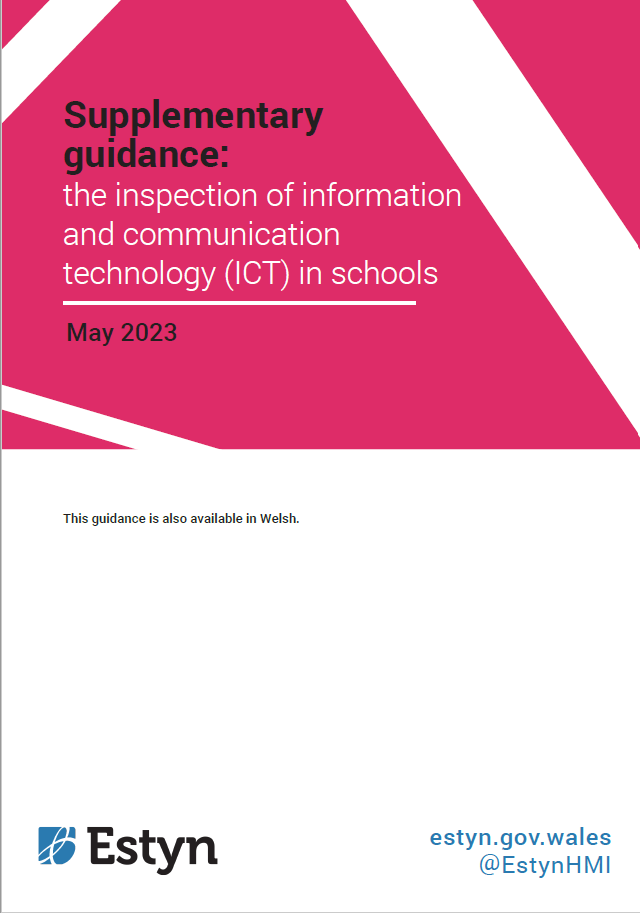Supplementary guidance: the inspection of information and communication technology (ICT) in schools

Our inspection guidance explains What we inspect and How we inspect. However, we also produce supplementary guidance to help inspectors to consider specific aspects of education and training further.
The supplementary guidance documents set out some key principles, considerations, and resources for inspectors. They relate to all sectors that Estyn inspects, unless they state that they are for a specific sector. They expand on certain aspects of education/training (e.g. the inspection of literacy) or on ways of conducting inspections (e.g. the use of learning walks) or specific inspection arrangements (e.g. guidance on inspecting church schools).
The supplementary guidance documents do not aim to be comprehensive. Inspectors are not required to work through them exhaustively when covering any specific aspect on an inspection. However, inspectors may find them useful when responding to specific emerging questions that arise during inspections or when they wish to reflect or investigate further.
The supplementary guidance documents may help providers gain an understanding of Estyn’s inspection arrangements. They may also be helpful to providers in evaluating specific aspects of their own provision.
Our inspection work is based on the following principles:
- Inspectors will approach inspection with a positive mindset to ensure it is the best possible professional learning experience for the staff in each provider
- Inspectors will take a learner-led approach to inspection
- Inspectors will always focus strongly on the quality of teaching and learning
- Inspectors will seek out well-considered innovative practice
- Inspectors will tailor the inspection activities according to the circumstances in each provider as far as possible
- Inspectors will be agile and responsive to emerging findings and will use the increased range of inspection tools and approaches available
- Inspectors will consider everything in the inspection framework, but will only report on the key strengths and weaknesses within each provider